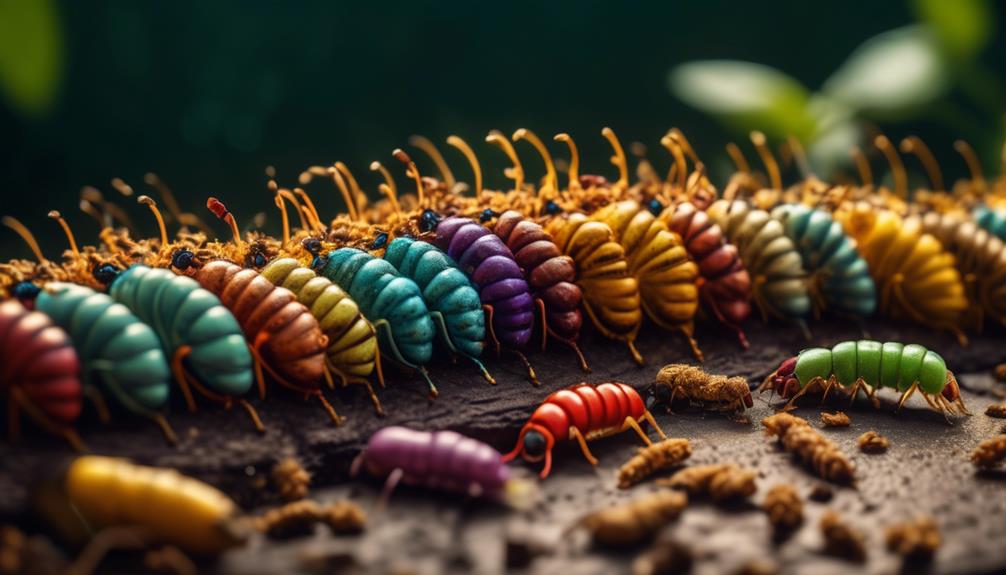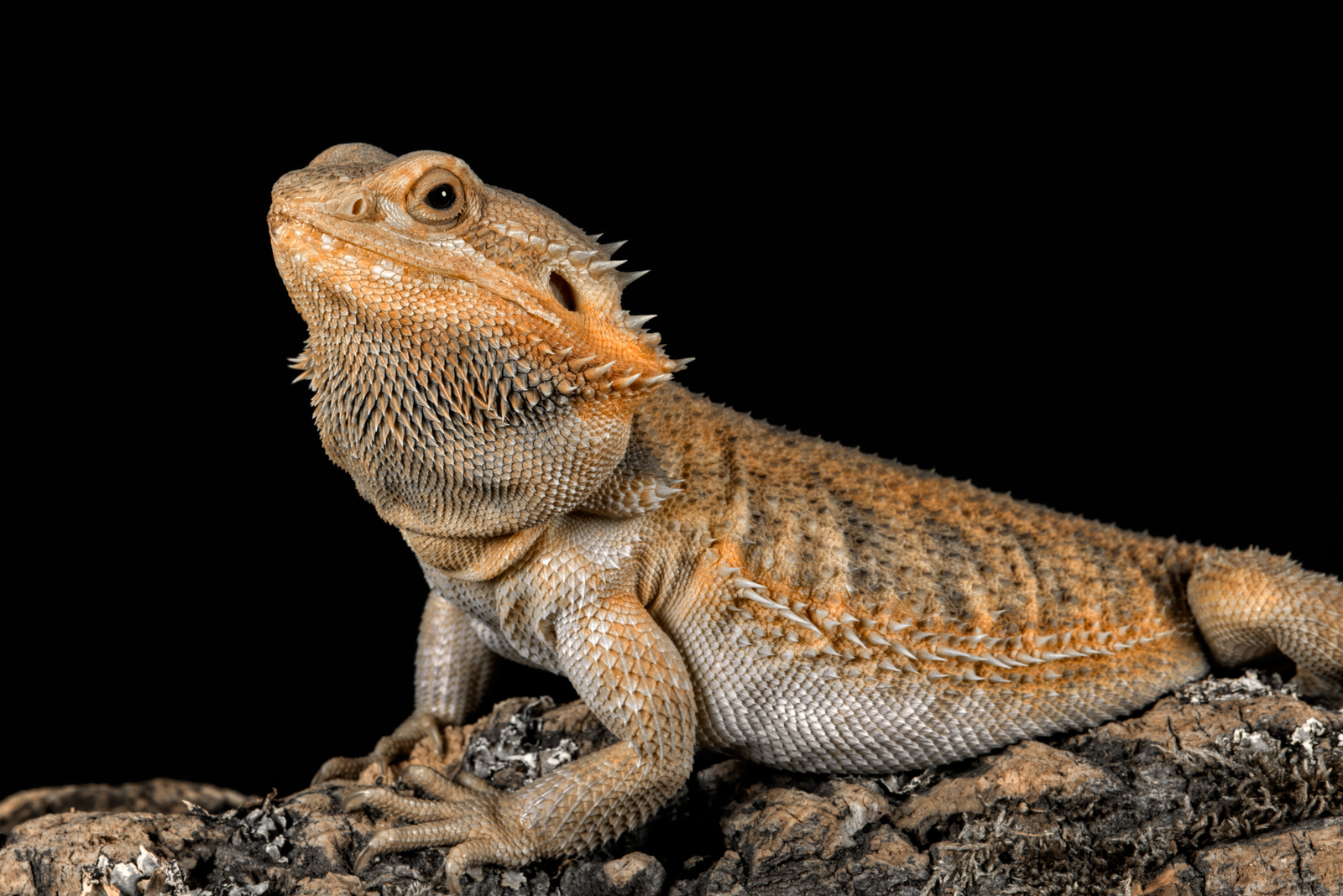Welcome to our article on waxworms, the high-fat treats that have become a favorite among pets and their owners alike. As pet owners, we are always on the lookout for new and nutritious options to keep our furry friends happy and healthy.
Waxworms, the larvae of the Achroia grisella and Galleria mellonella moths, have gained popularity due to their unique nutritional composition. But what makes waxworms so special?
In this discussion, we will uncover the secrets behind their high fat content and explore why pets crave these delectable treats. Get ready to discover a whole new world of pet food options that will leave you wanting more.
Key Takeaways
- Waxworms are the larval stage of the wax moth and are commercially bred as small maggot-type insects.
- They have a nutritional profile with high moisture, protein, and fat content, making them a high-fat treat for pets.
- Waxworms can be stored in a container without needing additional food or hydration, as they arrive with their food.
- Waxworms are suitable for insect-eating pets and provide a well-balanced nutritional profile, although their high-fat content makes them commonly used as treats.
Waxworms: A Nutritional Powerhouse

Waxworms are undeniably a nutritional powerhouse for pets, offering a balanced profile of essential nutrients and vitamins. When it comes to reptiles, feeding waxworms can provide numerous benefits. These small maggot-like insects are rich in moisture, protein, and fat, making them an excellent source of energy for reptiles. Additionally, waxworms contain calcium, which is crucial for reptile growth and bone health.
However, it's important to consider the environmental impact of waxworm production. Commercially breeding waxworms requires resources such as grains and honey, which can have implications for land use and water consumption. Furthermore, the waste produced during waxworm production can contribute to environmental pollution if not properly managed.
While waxworms offer significant nutritional benefits for reptiles, it's essential to find a balance between their benefits and the environmental consequences of their production. By considering sustainable sourcing and production methods, we can ensure that feeding waxworms to reptiles remains a viable option without negatively impacting the environment.
Why Pets Love High-Fat Waxworm Treats
When it comes to satisfying their taste buds, pets can't resist the allure of high-fat waxworm treats. These treats have a unique appeal for pets due to their high-fat content. Waxworms, the larval stage of the wax moth, are commercially bred and have a fat content of 24.9%, making them a rich and indulgent snack for pets.
However, it's important to note that waxworms also offer several benefits in pet diets. They're a well-balanced nutritional powerhouse, containing not only high levels of fat but also protein, calcium, and other vitamins. While waxworms are commonly used as treats due to their high-fat content, they can be a valuable addition to a pet's diet, providing essential nutrients and adding variety to their meals.
Comparing Waxworms to Other Insect Treats

Comparing waxworms to other insect treats reveals the unique nutritional qualities and benefits they offer for pets. When it comes to waxworms vs mealworms, waxworms have a distinctive advantage in terms of their nutritional benefits. Here's why waxworms stand out:
- Higher fat content: Waxworms contain a higher fat content compared to mealworms, making them a more indulgent treat for pets.
- Balanced nutritional profile: Waxworms provide a well-balanced nutritional profile, containing calcium, protein, and other essential vitamins.
- Variety of insect options: While mealworms are a popular choice, waxworms offer a different texture and taste, providing pets with a diverse selection of insect treats.
With their high-fat content and unique nutritional benefits, waxworms offer pets a delectable treat that can be enjoyed as part of a balanced diet.
Storing Waxworms: Tips for Longevity
To ensure the longevity of waxworms, proper storage techniques are essential. Temperature and container options play a crucial role in maintaining the quality and health of these high-fat treats for pets. Waxworms should be stored in a cold environment to prevent them from pupating and turning into moths. The fridge door is an ideal storage place as it provides the necessary cool temperature. Additionally, keeping waxworms in their original plastic container, which comes with a sawdust substrate, helps maintain their freshness and prevents them from drying out. This container provides a suitable habitat for the waxworms and eliminates the need for additional food or hydration. By following these storage tips, pet owners can ensure that their waxworms remain in optimal condition for longer periods, providing potential health benefits to their pets.
| Temperature and Container Options |
|---|
| Store in a cold environment |
| Fridge door is ideal |
| Keep in original plastic container with sawdust substrate |
| Waxworms: Potential Health Benefits for Pets |
| Suitable for any insect-eating animal |
| Well-balanced nutritional profile |
| Contains calcium, protein, and vitamins |
| High-fat content makes them commonly used as treats |
Dealing With Dead or Incorrect Orders: Customer Support Guide

Now let's address the important topic of handling dead or incorrect orders with our customer support guide. We understand that receiving a dead or incorrect order can be frustrating and inconvenient. That's why we strive to provide excellent customer service and resolve any order issues promptly.
Here are three key steps to handle such situations:
- Contact customer support with the order number, received item, and expected item. Our team is ready to assist you and rectify the mistake.
- If you receive dead bugs, please provide verification through a photo. We'll either provide a replacement or credit your account.
- In the rare event of receiving someone else's order, please contact customer support with both order numbers. We'll promptly send you the correct items.
At [Company Name], we value your satisfaction and are committed to resolving any customer complaints and ensuring that you receive the right order.
Frequently Asked Questions
How Long Do Waxworms Typically Live in Their Larval Stage Before Pupating?
Waxworms typically live in their larval stage for about 2-3 weeks before pupating. They are popular for feeding pets due to their high-fat content. For long term storage, keep waxworms cold to prevent pupation and use the fridge door for storage.
Can Waxworms Be Used as the Sole Food Source for Insect-Eating Pets?
Oh, you won't believe it! Waxworms as the sole food source for insect-eating pets? Absolutely not! While they have some nutritional value, their high-fat content makes them more suitable as occasional treats rather than a complete diet.
Are Waxworms Suitable for Pets With Specific Dietary Restrictions or Health Conditions?
Yes, waxworms may not be suitable for pets with specific dietary restrictions or health conditions due to their high-fat content. While they can be used as a treat, they shouldn't be the sole food source for insect-eating pets.
How Often Should Waxworms Be Fed to Pets as a Treat?
We should introduce waxworms as a treat to our pets sparingly, as they are high in fat. It's important to consider the pet's dietary restrictions and health conditions. There are other treats available besides waxworms.
Can Waxworms Be Frozen for Long-Term Storage?
Yes, waxworms can be frozen for long-term storage. Freezing extends the shelf life of waxworms, preventing them from pupating into moths. This method allows pet owners to have a readily available supply of high-fat treats.
Conclusion
In conclusion, waxworms are a nutritional powerhouse that pets love. Despite their high fat content, they offer a unique and diverse option for pet owners looking to diversify their pets' diet.
While some may have concerns about the high fat content, it's important to remember that moderation is key. By incorporating waxworms into your pet's diet, you can provide them with a high-fat treat that they'll crave while still ensuring a balanced and healthy diet overall.


